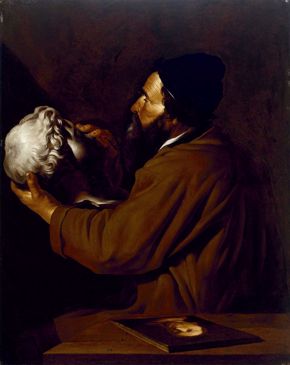Picturing the Senses in European Art April 10–July 17, 2011

Jusepe de Ribera, The Five Senses: Touch, 1615–16, oil on canvas, private collection.
Adriaen Jansz. van Ostade, Interior with Drinking Figures and Crying Children, 1634, oil on wood, Sarah Campbell Blaffer Foundation.
Jan Pietersz. Saenredam, after Hendrick Goltzius, Allegory of Sight and the Art of Painting,
1616, engraving, Sarah Campbell Blaffer Foundation.
Jan van Huysum, Still Life of Flowers and Fruit, c. 1715, oil on wood, the Museum of Fine Arts, Houston, Museum purchase funded by the Alice Pratt Brown Museum Fund and the Brown Foundation Accessions Endowment Fund.
Parrasio Micheli, Young Woman Playing a Lute, c. 1570, oil on canvas,
Sarah Campbell Blaffer Foundation.
Sebastiano Ceccarini, Portrait of the Young Princes Marescotti of Parrano, 1745, oil on canvas, private collection.
Pieter Claesz., Still Life with a Basket of Grapes, c. 1625, oil on wood, the Edward and Sally Speelman Collection.
The concept of the five senses is rooted in Greek philosophy, which held that the senses are points of contact between people and the universe. The five senses as a theme in art, however, did not appear until the medieval period, when sight, hearing, touch, smell, and taste were often associated with vice. The 16th century saw the first artistic treatment of the senses as independent subjects.
This exhibition of European paintings and prints from the 16th through 18th century explores the ability of artworks to evoke all five senses through a wide range of visual associations. Comprising works selected primarily from the collections of the Sarah Campbell Blaffer Foundation and the MFAH, Picturing the Senses in European Art offers an opportunity to see some works that are not often on display and to view more familiar ones in a fresh context.
